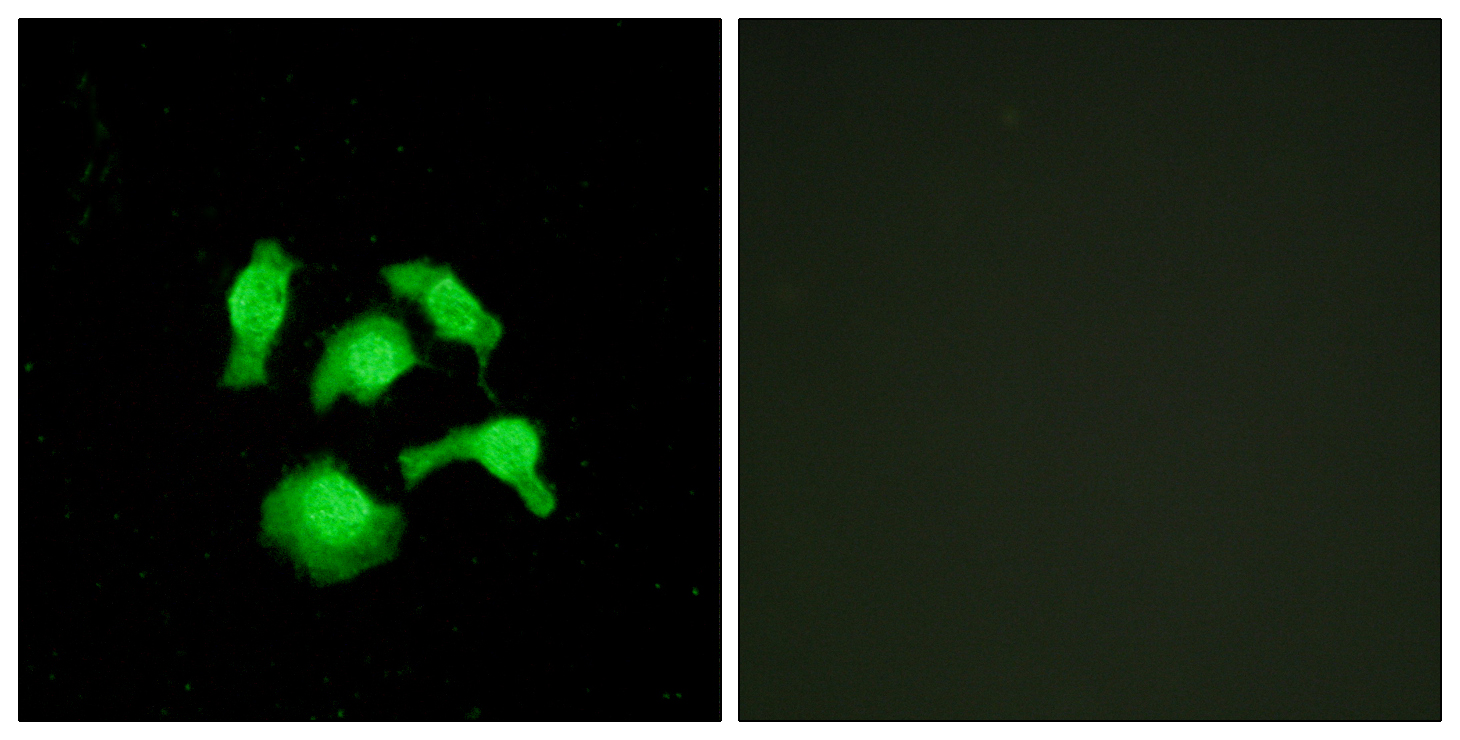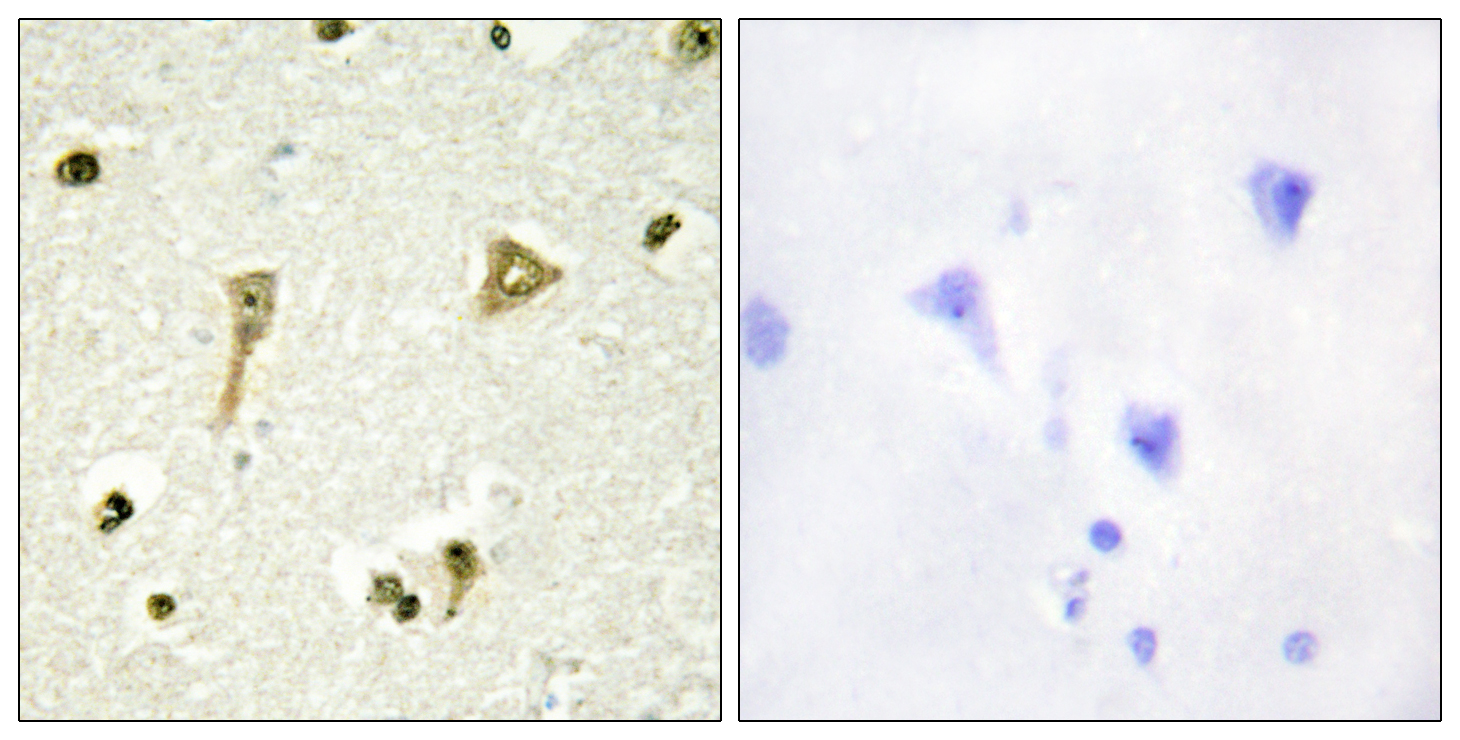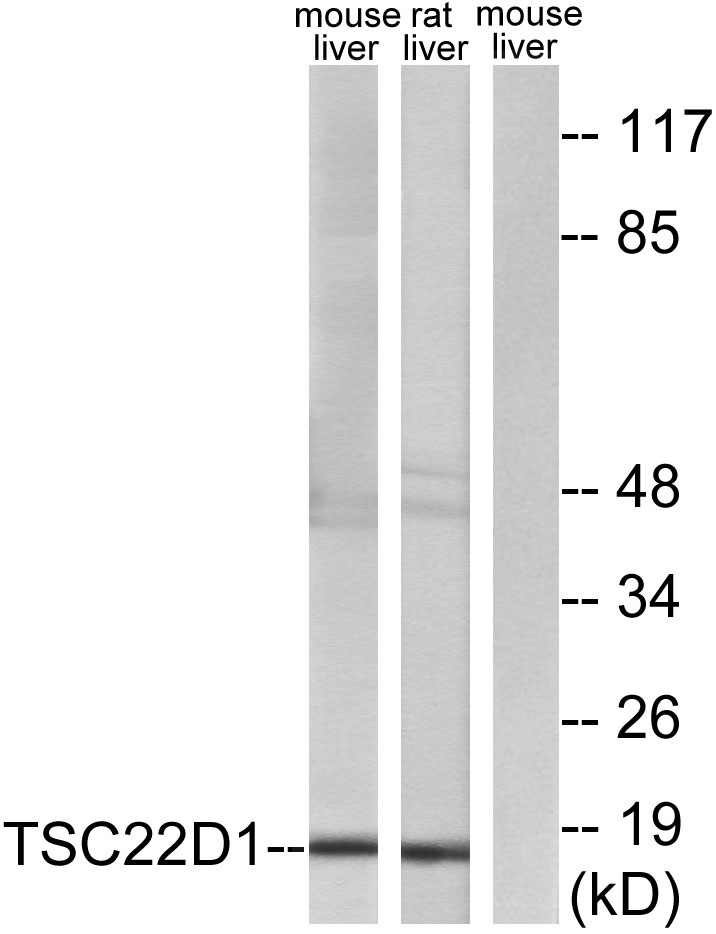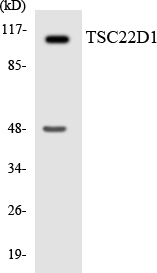TSC-22 Polyclonal Antibody
- Catalog No.:YT4758
- Applications:WB;IHC;IF;ELISA
- Reactivity:Human;Mouse;Rat
- Target:
- TSC-22
- Gene Name:
- TSC22D1
- Protein Name:
- TSC22 domain family protein 1
- Human Gene Id:
- 8848
- Human Swiss Prot No:
- Q15714
- Mouse Gene Id:
- 21807
- Mouse Swiss Prot No:
- P62500
- Rat Gene Id:
- 498545
- Rat Swiss Prot No:
- P62501
- Immunogen:
- The antiserum was produced against synthesized peptide derived from human TSC22D1. AA range:71-120
- Specificity:
- TSC-22 Polyclonal Antibody detects endogenous levels of TSC-22 protein.
- Formulation:
- Liquid in PBS containing 50% glycerol, 0.5% BSA and 0.02% sodium azide.
- Source:
- Polyclonal, Rabbit,IgG
- Dilution:
- WB 1:500 - 1:2000. IHC 1:100 - 1:300. IF 1:200 - 1:1000. ELISA: 1:20000. Not yet tested in other applications.
- Purification:
- The antibody was affinity-purified from rabbit antiserum by affinity-chromatography using epitope-specific immunogen.
- Concentration:
- 1 mg/ml
- Storage Stability:
- -15°C to -25°C/1 year(Do not lower than -25°C)
- Other Name:
- TSC22D1;KIAA1994;TGFB1I4;TSC22;hucep-2;TSC22 domain family protein 1;Cerebral protein 2;Regulatory protein TSC-22;TGFB-stimulated clone 22 homolog;Transforming growth factor beta-1-induced transcript 4 protein
- Observed Band(KD):
- 16kD
- Background:
- This gene encodes a member of the TSC22 domain family of leucine zipper transcription factors. The encoded protein is stimulated by transforming growth factor beta, and regulates the transcription of multiple genes including C-type natriuretic peptide. The encoded protein may play a critical role in tumor suppression through the induction of cancer cell apoptosis, and a single nucleotide polymorphism in the promoter of this gene has been associated with diabetic nephropathy. Alternatively spliced transcript variants encoding multiple isoforms have been observed for this gene. [provided by RefSeq, Aug 2011],
- Function:
- function:Transcriptional repressor. Acts on the C-type natriuretic peptide (CNP) promoter.,induction:In aortic endothelial cells, induced by cytokines, including TGFB.,similarity:Belongs to the TSC-22/Dip/Bun family.,subunit:Homodimer or heterodimer. Can form an heterodimer with TSC22D4.,tissue specificity:Widely expressed in fetal and adult tissues.,
- Subcellular Location:
- Cytoplasm . Nucleus .
- Expression:
- Widely expressed in fetal and adult tissues.
- June 19-2018
- WESTERN IMMUNOBLOTTING PROTOCOL
- June 19-2018
- IMMUNOHISTOCHEMISTRY-PARAFFIN PROTOCOL
- June 19-2018
- IMMUNOFLUORESCENCE PROTOCOL
- September 08-2020
- FLOW-CYTOMEYRT-PROTOCOL
- May 20-2022
- Cell-Based ELISA│解您多样本WB检测之困扰
- July 13-2018
- CELL-BASED-ELISA-PROTOCOL-FOR-ACETYL-PROTEIN
- July 13-2018
- CELL-BASED-ELISA-PROTOCOL-FOR-PHOSPHO-PROTEIN
- July 13-2018
- Antibody-FAQs
- Products Images

- Immunofluorescence analysis of HepG2 cells, using TSC22D1 Antibody. The picture on the right is blocked with the synthesized peptide.

- Immunohistochemistry analysis of paraffin-embedded human brain tissue, using TSC22D1 Antibody. The picture on the right is blocked with the synthesized peptide.

- Western blot analysis of lysates from mouse liver and rat liver cells, using TSC22D1 Antibody. The lane on the right is blocked with the synthesized peptide.

- Western blot analysis of the lysates from HepG2 cells using TSC22D1 antibody.



